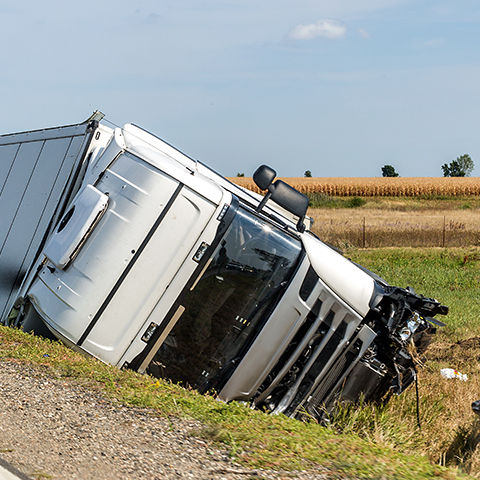Common Types of Traffic Violations
Traffic law violations are infractions committed by drivers that breach the regulations set to ensure road safety and order. These violations can range from minor offenses to serious transgressions, each carrying varying degrees of penalties. Understanding common types of traffic violations is crucial for any driver, as it not only aids in avoiding fines and legal issues but also promotes safer driving habits.
One of the most frequent traffic violations is speeding. This occurs when a driver exceeds the speed limit set for a particular area or road condition. Speed limits are established based on factors such as road type, traffic density, and surrounding environment to ensure safe travel conditions. Exceeding these limits can result in reduced reaction times and increased stopping distances, significantly raising the risk of accidents.
Running red lights and stop signs is another prevalent violation. Traffic signals and stop signs are fundamental components of road safety, designed to regulate the flow of vehicles at intersections and junctions. Ignoring these indicators not only endangers the violating driver but also other road users including pedestrians. Such actions often lead to severe collisions due to the high likelihood of conflicting vehicle paths.
Driving under the influence (DUI) is among the most dangerous traffic violations. Operating a vehicle while impaired by alcohol or drugs severely diminishes a driver's ability to make sound judgments and react appropriately to roadway situations. DUI offenses carry heavy penalties including substantial fines, license suspension, mandatory education programs, and even imprisonment due to their high potential for causing fatal accidents.
Illegal parking represents another common violation though it may seem less severe compared to others like speeding or DUI. Parking in restricted zones, such as handicapped spaces without proper authorization or blocking fire hydrants, creates inconvenience and hazards for other road users. It can obstruct emergency services access or force pedestrians into unsafe areas.
Improper lane changes also constitute a frequent infraction on roads. This includes failing to signal when changing lanes or weaving through traffic recklessly. Such behavior disrupts the predictable flow of traffic and increases the risk of side-swipe accidents.
Lastly, distracted driving has become increasingly problematic with advancements in technology. Using mobile phones for texting or calls while driving takes attention away from the road which leads to delayed reactions or missing critical visual cues necessary for safe driving.
In conclusion, common types of traffic violations such as speeding, running red lights, DUI, illegal parking, improper lane changes, and distracted driving all pose significant risks on our roads. Adhering strictly to traffic laws not only helps avoid legal repercussions but more importantly ensures safety for all individuals sharing public roadways. Awareness and responsible driving are key elements in fostering a secure driving environment.
Consequences of Traffic Violations
Traffic law violations, though often perceived as minor infractions, can lead to a cascade of consequences that significantly impact individuals and society. Understanding these repercussions is crucial for fostering responsible driving habits and ensuring road safety.
The immediate consequence of a traffic violation is typically a monetary fine. These fines vary depending on the severity of the offense, ranging from minor penalties for speeding slightly over the limit to hefty charges for more serious infractions like reckless driving or DUI (Driving Under the Influence). While paying a fine might seem simple, it can strain an individual's finances, especially if multiple violations accumulate over time.
Beyond financial penalties, traffic violations often result in demerit points being added to a driver's record. Accumulating too many points can lead to increased insurance premiums as insurers view habitual offenders as high-risk clients. This spike in insurance costs can linger for years, placing a long-term financial burden on violators.
More severe consequences include license suspensions or revocations. Losing the privilege to drive can disrupt daily life profoundly. It affects one's ability to commute to work, run errands, or fulfill family responsibilities. In many regions where public transportation options are limited or inefficient, this loss of mobility can isolate individuals and hinder their economic opportunities.
Legal ramifications also escalate with the seriousness of the offense. For instance, DUI cases not only involve high fines and license suspensions but may also lead to mandatory substance abuse programs, probation, community service, or even imprisonment. These legal hurdles consume time and resources and leave lasting marks on one's criminal record.
Traffic violations have broader societal impacts too. They contribute to road accidents which cause injuries and fatalities annually. The emotional toll on victims' families is immeasurable; additionally, medical expenses and loss of productivity impose economic strains on communities and healthcare systems.
In conclusion, traffic law violations carry significant consequences that extend far beyond immediate fines. They affect personal finances through fines and insurance hikes; they disrupt lives through license suspensions; they impose legal burdens with potential jail time; and they endanger public safety by contributing to road accidents. Awareness of these repercussions underscores the importance of adherence to traffic laws for individual well-being and communal harmony.
Legal Procedures and Penalties
Legal Procedures and Penalties for Traffic Law Violations
Traffic law violations are an everyday occurrence on roads worldwide. They range from minor infractions like speeding a few miles per hour over the limit to severe offenses such as driving under the influence of alcohol. Understanding the legal procedures and penalties associated with these violations is crucial for all drivers, as it not only promotes safer driving habits but also helps individuals navigate the legal consequences should they find themselves on the wrong side of the law.
When a driver commits a traffic violation, the initial interaction typically occurs with a law enforcement officer who issues a citation or ticket. This document outlines the nature of the offense, including details like time, location, and specific laws broken. The driver usually has several options upon receiving this citation: paying a fine, attending traffic school, or contesting the ticket in court.
Paying the fine is perhaps the most straightforward method of resolving a traffic violation. By doing so, the driver admits guilt and agrees to accept whatever penalties accompany that admission. These penalties often include points added to their driving record, which can lead to increased insurance premiums or even suspension of their driver's license if too many points accumulate over time.
Attending traffic school is another option available for certain types of infractions. Completing an approved course can sometimes result in dismissal of the ticket or reduction of points on one's driving record. Traffic school courses educate drivers about road safety and encourage better driving practices, aiming to reduce future violations.
For those who believe they were wrongly cited or wish to dispute their case, contesting a ticket in court is an available recourse. This process involves appearing before a judge and possibly presenting evidence or witnesses to support one's defense. If successful, the charges may be reduced or dismissed entirely; however, if unsuccessful, additional court costs could be incurred on top of existing fines and penalties.
More serious traffic violations such as DUI (Driving Under Influence) carry stiffer penalties due to their potential danger to public safety. Legal procedures in such cases are more rigorous; they often involve arrest at the scene followed by formal charges being filed by prosecutors. The accused might need representation by an attorney specializing in DUI cases given that potential penalties include heavy fines, mandatory educational programs about substance abuse, long-term license suspension or revocation, community service hours mandated by court order-or even jail time depending on prior offenses or severity.
In some jurisdictions around world-particularly where high rates accidents occur-governments implement alternative punitive measures beyond traditional fines imprisonment measures found within U.S., Canada Europe: Singapore uses demerit systems allow automatic disqualification licenses repeat offenders Thailand enforces compulsory training rehabilitation programs violators South Africa imposes immediate vehicle impoundment exceeding certain thresholds speed alcohol limits among others similarly innovative deterrents designed curb dangerous behaviors ensure compliance local national international standards set protect everyone sharing roadways.
In conclusion understanding navigating complex landscape surrounding legal procedures penalties associated with traffic law violations essential maintaining clean safe responsible conduct while operating motor vehicles today's fast-paced increasingly crowded environments we find ourselves traveling through daily basis whether commuting work running errands enjoying leisure activities alike knowing what expect facing consequences mistakes poor decisions along way ultimately helps foster greater respect laws governing transportation infrastructure integral part modern society ensuring smooth efficient functioning critical lifeline economies communities everywhere thrive depend upon reliable predictable secure networks mobility enable commerce interaction growth progress forward into future together responsibly harmoniously ever vigilant eyes towards mutual wellbeing shared prosperity collective success common goals aspirations humanity whole endeavor reaching higher striving farther achieving more united pursuit excellence justice fairness equity across board regardless individual differences unique circumstances orientation perspectives
Preventive Measures and Best Practices
Traffic law violations are a significant concern worldwide, contributing to accidents, injuries, and fatalities. Addressing these issues requires a multifaceted approach that includes preventive measures and the implementation of best practices. By focusing on both individual behavior and systemic changes, we can create safer roads for everyone.
Preventive measures are actions taken to reduce the likelihood of traffic violations before they occur. Education is one of the most effective tools in this regard. Public awareness campaigns can inform drivers about the dangers of speeding, drunk driving, and distracted driving. These campaigns often use compelling statistics and real-life stories to highlight the severe consequences of reckless behavior on the road.
Law enforcement also plays a crucial role in prevention. Visible police presence acts as a deterrent against traffic violations. Regular patrolling and strategic placement of speed cameras in high-risk areas can significantly reduce incidents of speeding and other infractions. Moreover, implementing strict penalties for violations such as hefty fines or license suspensions serves as a strong deterrent.
Technology offers another layer of preventive measures. Advanced Driver Assistance Systems (ADAS) in modern vehicles can alert drivers to potential hazards and even take corrective actions if necessary. Features like automatic emergency braking, lane departure warnings, and adaptive cruise control help mitigate human error, which is often a primary cause of accidents.
Best practices encompass strategies that have been proven effective over time in reducing traffic violations and enhancing road safety. One such practice is the implementation of graduated driver licensing (GDL) programs for new drivers. GDL programs introduce driving privileges gradually, allowing novice drivers to gain experience under less risky conditions before obtaining full licensure.
Another best practice involves infrastructure improvements designed with safety in mind. Roundabouts, for example, have been shown to reduce fatal crashes compared to traditional intersections by promoting slower speeds and reducing conflict points between vehicles. Similarly, well-marked pedestrian crossings and dedicated bike lanes ensure that all road users can navigate safely.
Community engagement is also vital in promoting best practices for traffic safety. Local governments can collaborate with schools, businesses, and community organizations to develop initiatives tailored to specific needs within their jurisdictions. For instance, neighborhood watch programs focused on traffic safety can empower residents to report dangerous driving behaviors promptly.
Additionally, continuous professional development for those involved in traffic management-such as urban planners, engineers, and law enforcement officers-is essential. Keeping abreast of the latest research findings and technological advancements enables these professionals to implement innovative solutions effectively.
In conclusion, addressing traffic law violations requires a comprehensive approach that integrates preventive measures with proven best practices. By educating the public, enforcing laws stringently, leveraging technology, improving infrastructure design, engaging communities, and ensuring continuous professional development among stakeholders-we can make significant strides toward safer roads for all users.

